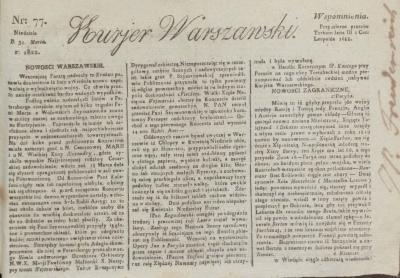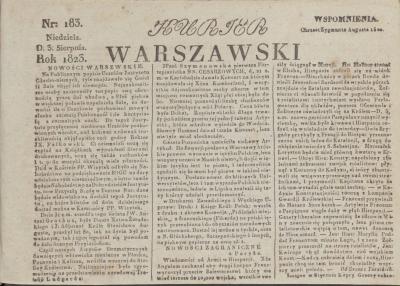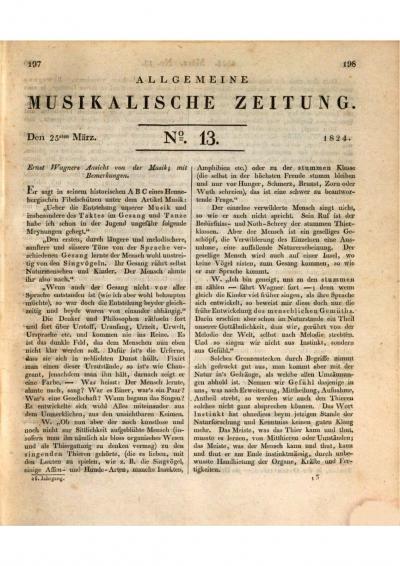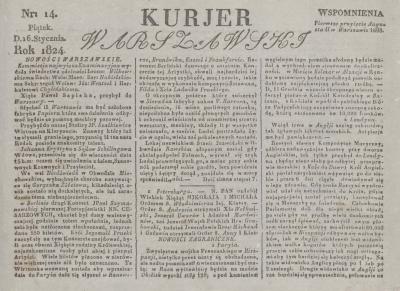Madame Szymanowska and Goethe – a burning love?

Szymanowska’s departure from Weimar the next day once again threw Goethe into emotional turmoil and invoked the previous separation from Ulrike von Levetzow again. Chancellor von Müller reported: “When I came to see Goethe in the afternoon, I found him still sitting at the table with Mad. Szymanowska; she had just handed out the most delicate little leaving presents, some of them made by her own hand, to the whole family right down to little Wolf, her favourite, and the old gentleman was in the most wonderful mood. He wanted to be cheerful and humorous, but the deepest sorrow of parting was clearly visible. – […] She was summoned to a farewell audience with the Grand Duchess at 5 o’clock, where she appeared dressed all in black in line with court mourning, which heightened the impression for Goethe. The carriage drove up and without him noticing, she disappeared. It seemed doubtful whether she would ever come again. – Then the human in Goethe emerged quite bare and exposed; he asked me most urgently to make sure that she should come back and not leave without a goodbye. A few hours later, the son and I drove her and her sister to him. – ‘I part from you bountiful and comforted […] You have validated my self-belief, I feel better and more worthy because you respect me. Speak not of parting, nor of thanks; let us dream of our reunion’ […] … every effort at humour did not help [Goethe] to hold back the tears that broke free, speechless he enfolded her and her sister in his arms and his gaze stayed with them for a long time as they disappeared through the long open row of chambers. – ‘I have a lot to thank this wonderful woman for’, he told me later, her friendship and her wonderful talent have given me back to myself.”[62]
Szymanowska’s concerts in Weimar and in Goethe’s house were the subject of discussion for a long time and the pianist and the poet remained in contact over the years, even if only by letter. In December 1823, in a letter to the painting collector Sulpiz Boisserée from Cologne, who also wrote about art and architecture, Goethe looked back on Szymanowska’s visit to Weimar: “At the same time, Count Reinhard and his family arrived at our house, his birthday was celebrated cheerfully and respectably […] An incomparable pianist, Madame Szymanowska, whose charming presence and inestimable talent had already brought much joy to me in Marienbad, came directly after them, and for two weeks my house was the meeting place for all music friends lured by high art and amiable character. Court and town, excited by her, lived henceforth in sounds and pleasures. – Directly after her, the minister of State von Humboldt, one of the true old friends from the Schiller period, visited me …”[63]
On 14 February the following year, Goethe noted: “After dinner, Chancellor von Müller, bringing news of Madame Szymanowska, also talking through other politics”[64], on 27 March: “News of Madame Szymanowska in Constitutionnel“,[65] a Parisian newspaper for business, politics and literature. In a letter from London dated 2 July 1824, Szymanowska expressed her disappointment that Goethe – as she had learnt from Chancellor von Müller – did not intend to visit Marienbad in this year. She was happy with her stay in London. On her return to Poland, she intended to have a stopover in Weimar.[66] In June1829, Szymanowska had Zelter announce in a letter that two Poles would be visiting Weimar, the poet Adam Mickiewicz, who would later be her son-in-law, and the lyricist, dramatist and translator Antoni Edward Odyniec: “Our friend Mad. Szymanowska recommends a talented Polish compatriot and poet particularly to you as prince of poets. His name is Mickiewicz and he intends to travel through Germany to Italy. The young man already speaks considerable German and is particularly recommended. The rest you may learn from him directly.”[67] In fact, Mickiewicz and Odyniec arrived in Weimar on 18 August 1829 and stayed there at Goethe’s invitation beyond his birthday and up to the end of the month.[68]
[62] Wednesday, 5 November. Goethes Unterhaltungen (see Note 60), page 72 f. – Little Wolf Goethe‘s grandson, three-year-old Wolfgang Maximilian.
[63] To Sulpiz Boisserée [in Paris], Weimar, 12 December 1823. Goethe: Briefe (see Note 32), page 276; also in: Sulpiz Boisserée, Volume 2: Briefwechsel with Goethe, Stuttgart: Cotta 1862, page 363 f., online resource: https://www.digitale-sammlungen.de/de/view/bsb10061843?q=Szymanowska&page=370,371
[64] 14 February 1824. Goethe: Tagebücher (see Note 28), page 178
[65] 27 March 1824. Ibid, page 197
[66] Newly discovered letter in the Goethe and Schiller Archive in Weimar, compare Stolarzewicz 2014 (see Online), page 124. For reasons unknown, the next meeting in Weimar evidently did not take place.
[67] To Goethe. Berlin, Friday, 12 June 1829. Briefwechsel zwischen Goethe und Zelter in den Jahren 1796 bis 1832, Band 5: Jahre 1828 bis 1830 Juny, published by Friedrich Wilhelm Riemer, Berlin: Duncker und Humblot, 1834, page 246, online resource: https://www.digitale-sammlungen.de/de/view/bsb10598617?q=Mickiewicz&page=248,249
[68] Extensive report on Mickiewicz and Odyniec’s visit to Goethe in: Karpeles 1890 (see Literature), pages 70-97. – Zuvor bei Franz Thomas Bratranek: Zwei Polen in Weimar (1829). Ein Beitrag zur Goetheliteratur aus polnischen Briefen übersetzt und eingeleitet, Vienna 1870, pages 29 f.: “… Mickiewicz had also received letters of recommendation addressed to Goethe (and to his daughter-in-law Ottilie) from Mad. Szymanowska, who he had recently celebrated in a poem as “Queen of sounds’. The effectiveness of these letters can be judged by Goethe’s words which he expressed to Chancellor Müller in 1823 when they were leaving: ‘I have much to thank this wonderful woman for…’”, online resource: https://www.digitale-sammlungen.de/de/view/bsb11014107?q=Szymanowska&page=42,43
















